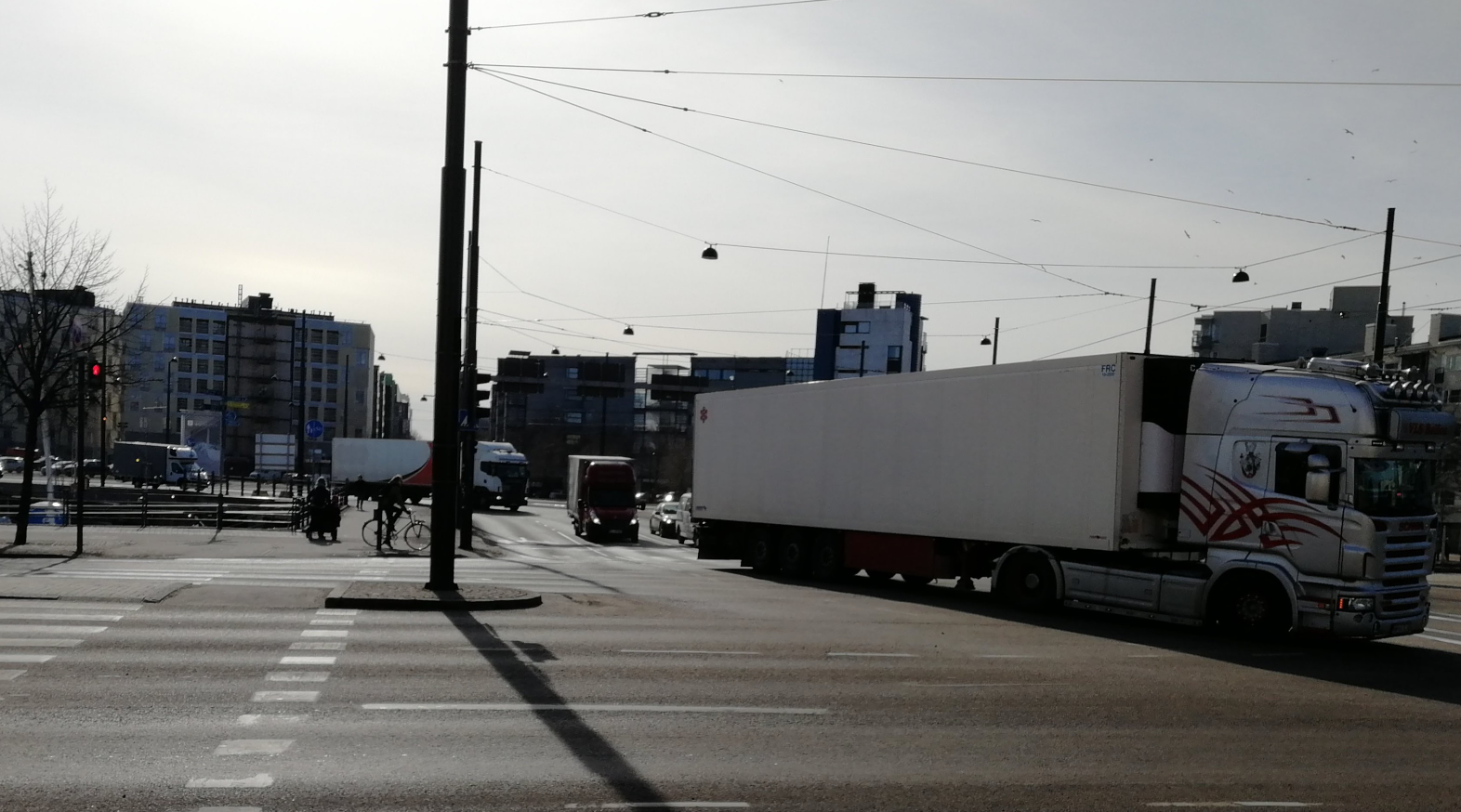Just take a look at the above photograph taken during the late afternoon (rush hour) just after the arrival of an Estonian ferry from Tallinn, a ship that emptied its bowels with many eastern European polluting diesel lorries and cars arriving from northern Europe. The traffic jam is long and very smelly. There are some eight to ten ships arriving every day in this harbour.
The City of Helsinki has approved and built a new huge passenger terminal for cruise ships and other passenger and “Roll-on Roll-off” boats arriving from Estonia and other parts of the world. The harbour has been built on the west side of Helsinki and is surrounded buy new apartments shops and office blocks.
The harbour is situated on what was formerly an island which is now connected to parts of Helsinki by two small bridges. All of the roads that cross these bridges are surrounded by apartment buildings when ordinary people are living. These same roads connect to the major motorways that allow the heavy lorries from Europe to deliver their goods around the whole country. All of these lorries and cars coming off the ferries, together with the buses carrying tourists and passengers from the boats, pump out lots of diesel fumes which the lungs of these unlucky residents
Helsinki is on a peninsula and most workers who come every morning and leave every evening to work in the centre of town drive along three big motorways from the west, north and east of the city.
The traffic from the harbour creates plenty of extra traffic from the centre of town, adding chaotic conditions to the rush hour.
The city fathers have built a metro system that is meant to serve those residents from the west, north and east of the city. However, residents like to use their cars, and for this purpose, many firms have given company cars to their employees for which the government has given some tax advantages. Another challenge is that the current metro system does not cover the widely spread out residential areas of the suburbs. If people want to use the metro they have to take a connecting bus to the nearest metro station, and then go deep underground to wait for the metro train to arrive. The resulting time taken for such commuting journeys is regarded by most people to be too long. It is perhaps too early to say if the new metro extensions to the west will relieve congestion on the roads. However, congestion and pollution from lorries and cars coming and going to and from the new harbour are deadly.
Helsinki is a city of less than 1 million people – it should not be that difficult to make proper plans to avoid such awful solutions that we now see here.





